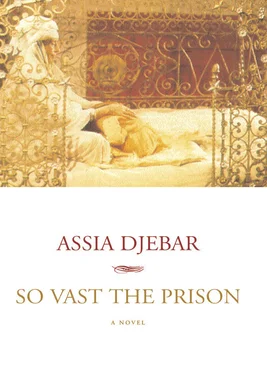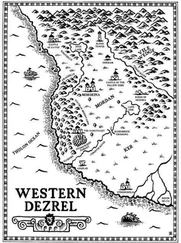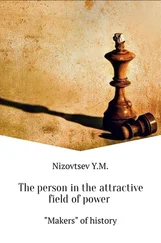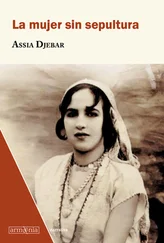The next morning I was going to walk on the site of great Carthage , he writes. It is the ultimate goal of his Excursions en Méditerranée , the collection that he will publish shortly after his return to London.
In it he recounts how, after having visited Monastir, Mahdia, and Jem, he wants to travel farther into the interior but is kept in Tunis by the incessant rains of January 1833. Finally, on the first day of Ramadan, he sets out on his ride eastward, which will take him, in four days, to the site of Dougga.
The next day at dawn Granville Temple begins to look around the area. He remarks that Doctor Shaw, who in the middle of the preceding century left a description of his travels in this region as well as in Algeria, never visited this city, although it must have been “remarkable and thriving with many beautiful buildings.” The first of these that he admires is a temple of Jupiter with a dedication allowing him to date it back to the reign of Hadrian.
Lord Temple is drawn above all by how beautiful and well preserved the mausoleum standing in the center of an olive grove is. He notes its dimensions and describes the two stories and what remains of a third, the stepped foundations of the pyramid where a beautiful statue and other ornaments remain — one of them a quadriga with a warrior and a chariot driver. He also notes a statue of a draped woman, already damaged by bad weather.
On the east face a double inscription catches his eye and he is fascinated by it: One of the scripts is Punic — he quickly recognizes it. The other has unknown letters, probably “some form of old African,” he says to himself. He supposes therefore that this mausoleum dates from the last years of Punic Carthage — shortly before its disappearance, in 146 B.C.E. — or after?
He in turn copies down the double inscription and in all good faith believes himself the first foreigner to do so. In any event, when his account, Excursions en Méditerranée , appears in London in 1835, this version of the bilingual inscription will be reproduced by the scholar Gésénius. Learned researchers will follow him in attempting to decipher the mysterious writing: Honneger, Étienne Quatremère (who had already published work on Punic inscriptions), but also de Saulcy and A. C. Judas (a specialist in the study of the Libyan language).
Lord Temple presses on with his journey into the regency of Tunis, where he takes notes both about the ancient past and its stones and about everyday life in the present. Before leaving the country he makes friends with a Dane, Falbe, who has lived near Tunis for eleven years and who has just published a topographical map of the ruins of Carthage.
These two amateurs will meet up again in Paris in 1837 in an archeological association established by eighteen members of high society (among them a prince, a duke, two counts, but also the painter Chassériau) to undertake “digs at Carthage and other ancient cities in the regencies of Barbary.” Sir Temple and Falbe, because of their shared passion and their knowledge of the region, agree to go to the area themselves as volunteers in charge of directing the first excavations.
Summer 1837: To make up for the stinging failure of the siege of Constantine the previous autumn, the French government is actively preparing its revenge against the Algerians with the son of the king, the duke de Nemours, as one of the leaders of this campaign.
They decide on a military landing in Bône, attempting once again to take Constantine, where the bey Ahmed still rules.
Following behind the French army, Sir Temple and Falbe meet in Bône in September, where General Valée has promised to help the two archeologists by creating a scientific commission. The two take advantage of the occasion by identifying the ruins of Hippone, and they hope soon to locate those of Cirta, once the city has been captured.
Thus our two friends become witnesses, from an unexpected — apparently “scholarly”—perspective, to the siege and capture of Constantine in all its dramatic and murderous detail. Cirta, an eagle’s nest that only on rare occasions over the centuries had been made to submit!
The siege begins 6 October 1837. It will be trying for both armies: Torrential rain falls without break until 12 October and Lord Temple is already dreaming a little less ardently of discovering the tomb of Masinissa! For six nights in succession it is the work of the engineer corps to move the artillery cannons, which sometimes tip over into the ravines despite all the efforts of sappers and zouaves. They flounder in the mud and the sticky earth clings to the feet of both men and horses.
Everything is told from the point of view of those laying siege, sometimes in vividly realistic detail: “happy were the men who had tents!” to rest in, says the narrator with a sigh. In the cemeteries of Koudier Aly, soldiers break open the sides of tombs and “took out the remains of the dead so that they could lie down in their place.”
On the morning of the twelfth, good weather returns. Making a tour of inspection on horseback to study the area with his telescope, Damremont, head of the command post, is struck down by a cannon. He dies on the spot and is followed in turn by General Perrégaux, also fatally shot.
That very day the city is surrounded. The bey Ahmed, who thought it was impregnable (“nature has made it a second Gibraltar,” writes Lord Temple) had only provided for weak fortifications. On the evening of the two French generals’ death, the city is breached. On 13 October, at four in the morning, the attack is on, led by the Lamoricière’s column.
Hand-to-hand combat, house by house, street by street, alley by alley; the battle is made even more relentless by the explosion of a munitions depot belonging to the resistants, many of whom are killed there. The defenders begin to withdraw into the Casbah. Lord Temple gives a rather brief account of one episode: the death of hundreds upon hundreds of the people of the city as they try to flee through the ravine of el-Medjerday. “They descend the precipice using ropes” that give way under the weight; “they are all dragged down onto each other as they fall.” The next day, hundreds of bodies that have not been removed will be counted.
At the end of the morning of the fourteenth (“the night of 13–14 October there is a total eclipse of the moon between nine in the evening and two in the morning,” adds the witness), the Casbah is taken: the tricolor flag floats over the city.
During the night, thanks to this eclipse perhaps, the bey Ahmed and most of his cavalry are able to reach the nearby mountains. As for the survivors, the civilian population either unable to or not wishing to flee, almost sixteen thousand of them remain, holed up in their tile-roofed houses. They begin the experience of French occupation: provisions of wheat and barley are requisitioned from each home to fill the needs of the conquering army. The city dwellers huddle over their memory, their patios, the invisibility of their women.
Gustave Flaubert, who will visit the city almost twenty years later — before heading east, like our archeologists, to Carthage — will have as his guide the grandson of the great Salah Bey (a legendary figure from the beginning of the century, a hero of the resistance, and martyred by the Turkish rulers). And now his descendent is a mere secretary of some French officer! Going down into the Rummel Gorge, the great writer recalls the fall of hundreds of unfortunate people attempting to flee — a scene from the past that was now the subject of a currently popular painting. At the bridge of el-Kantara, the great novelist muses over the wild scene: “this is a place that is both enchanting and satanic.” Flaubert concludes magnificently: “I think of Jugurtha; the place resembles him. Constantine, moreover, is a true city in the ancient sense.”
Читать дальше












